If there’s one roll of film that I can’t get enough of, it’s Ilford’s Delta 3200. This modern film was released in 1998, and is the fastest remaining film on the market. It’s a wonderful, all-around film that captures beautiful highlights and a ridiculous amount of shadow detail. But it also displays a characteristic classic large-grain feel if you’re into that. So what’s the best way to shoot Delta 3200?
Ilford Delta 3200 can be shot between ISO 400 and 25,000, making it the B&W film with the largest exposure latitude on the planet. For the best quality results, Ilford recommends using DD-X, or Microphen, but similar results can be found with Xtol.
This film is extremely versatile. It’s one of my go-to films because it allows me to use a fast shutter speed to capture action and hand-hold the camera in low light. During the day, the film is perfect for capturing images in overcast or shady conditions, such as in the forests, metro systems, or back alleyways.
Delta 3200 has an extended ISO range that produces magnificient images when overexposure by up to two stops. Even when the film is overexposed and developed normally, it will create perfectly sharp, dense images with plenty of shadow detail.
The large grain structure of this film also creates a classic, dream-like look that many film photographers are after. Delta 3200 is one of the films I always reach for in portrait and wedding photoshoots because of the classic 1960s and 70s vibe it creates.
And because of its modern T-Grain structure, it’s exceptionally sharp and responsive to a variety of shooting conditions. In practice, T-Grains can be a little bit finicky to develop, so some care is necessary to ensure proper development with this film.
In this definitive guide to Ilford Delta 3200, we’ll go over everything from how to shoot this film in any light, as well as the best developers for it.
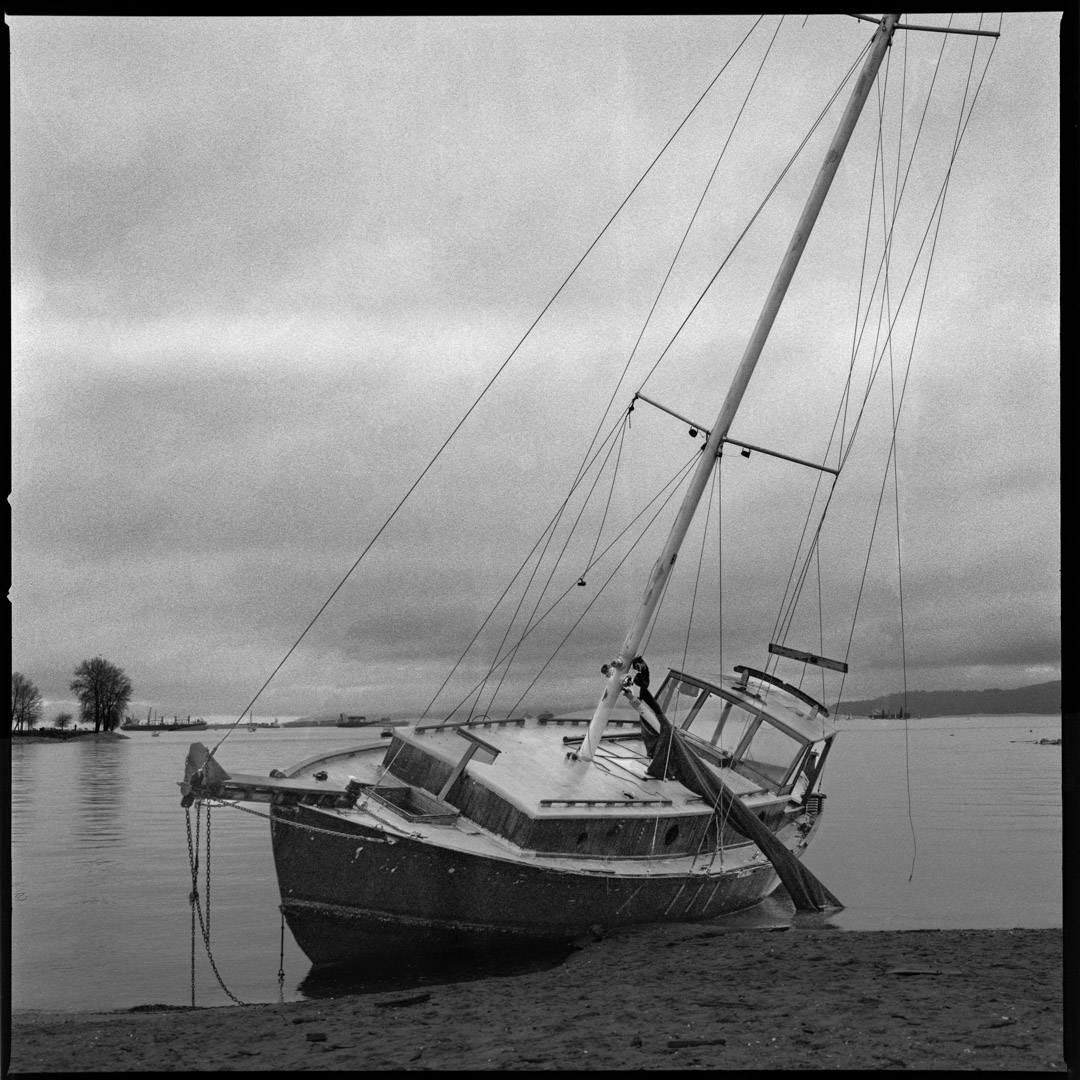
Who is Delta 3200 for?
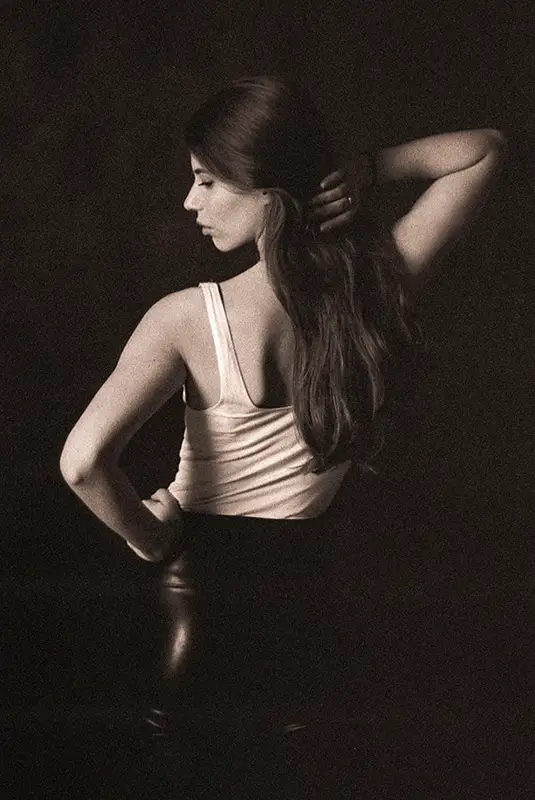
As much as I’d like to say everyone, it’s just not the case. The unfortunate side of this film is that it’s pricey. It’s the most expensive roll in Ilford’s lineup, largely because of the amount of silver needed to make a single roll. And it’s large grain structure means that it’s not going to produce overtly sharp results — especially for fine details like those found in landscape photographs.
But that doesn’t mean it’s not useful. It’s my favorite film stock for good reason, and that’s because of how wonderful it is for portraits, weddings, and nighttime photography.
If you’ve ever seen a film photographer taking photos at a reception, chances are they’re using Ilford Delta 3200. The chaotic dance floor lights, and lack of underexposure latitude in color films make them virtually unusable at such events.
With digital, it’s at least possible to correct some of the color casts, but film just doesn’t have the same flexibility, even when scanned with a DSLR. But Delta 3200 can render people and emotions under these conditions like no other! Even with a bit of motion blur, Delta 3200 just feels so real and raw when capturing people in low light situations.
It’s also the perfect film if you’re creating a classic-style photoshoot. Capturing images to look like they were shot in the ‘60s requires more than just ’60s-style Mod cocktail dresses and seafoam green. You’ll need big grains to match those big dreams.
Street photographers should also be putting down their Tri-X for Delta 3200. Shooting a forgiving film for street photography is extremely valuable, and it’ll also give that characteristic ‘50s full-grain charm. It’ll hold up extremely well from dawn to dusk, since you’ll be able to shoot between ISO 800 and 3200 all on the same roll.
In this case, pulling Delta 3200 to ISO 400 or 800 will give you more detail in the shadows than any other film available. Meaning it’ll soften the harsh, midday shadows on people’s faces, and give you the flexibility to choose your shadows and blacks in post.
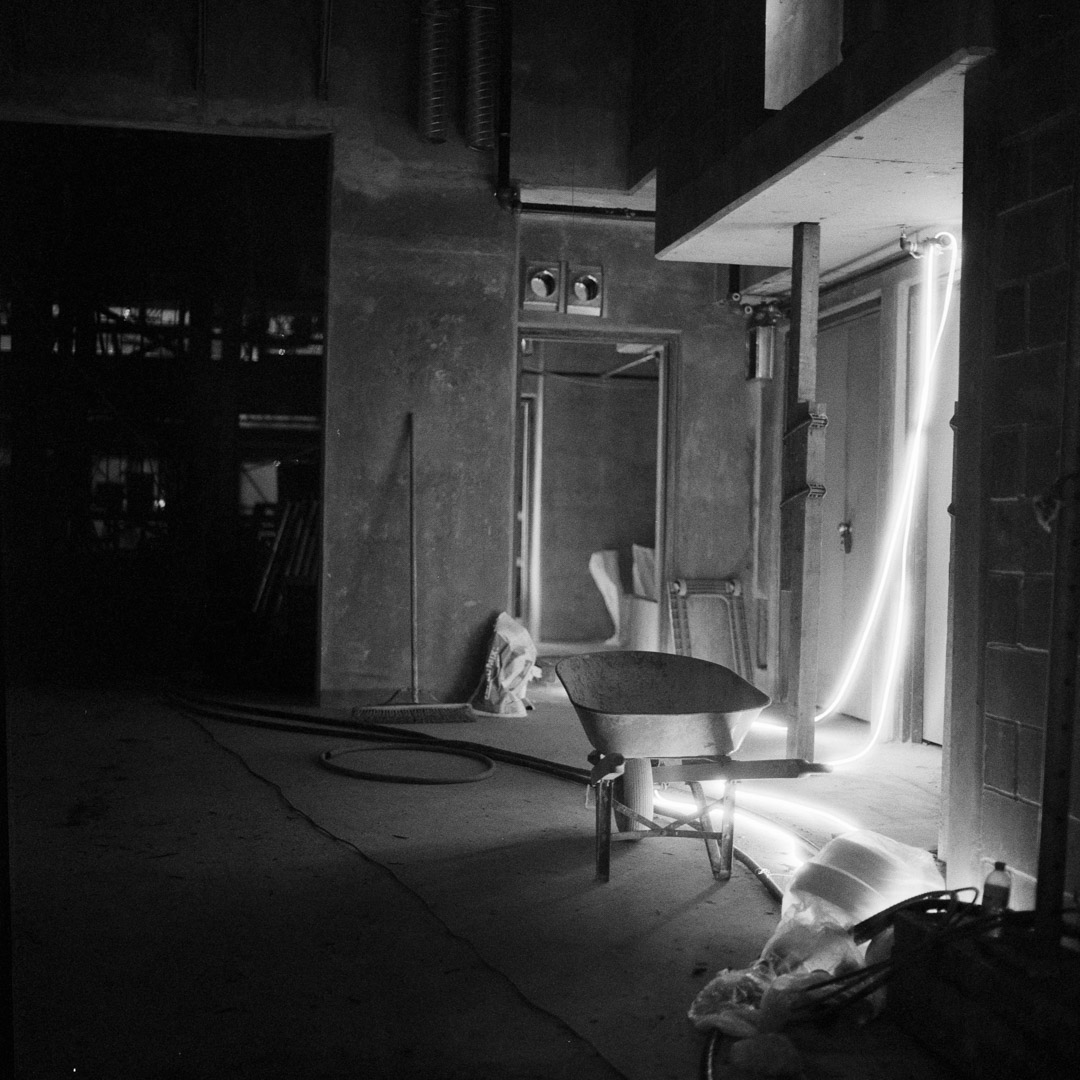
Traveling through airports with Ilford Delta 3200
There is always a special fear that bringing film through an x-ray scanner can damage it. Especially in our modern world where airport scanners are now ubiquitous and more powerful than ever, it’s important to take steps to protect film. But because of its high sensitivity, Delta 3200 is especially prone to x-ray damage.
When taking any high-speed films like Ilford Delta 3200 through an airport, make sure to have the films in a separate container and ask for them to be hand checked. All film that is higher than ISO 800 will be affected by airport security X-ray and CT scanners used to check luggage.
However, most airport security staff are more than willing to hand check all films — especially if they’re in an accessible container that makes the process easy for them (like this trendy one that works for both 120 and 35mm film on Amazon). I’ve taken film through many airports in Canada, Europe, and the US, and they’re all willing to hand-check films.
The easiest way to get film through security is to ensure they are unwrapped so that security does not need to unwrap them to complete their swabs. If they remain in their wrappers, many security agents will simply put the film through the scanners.
If you don’t want to risk it, it may be a better option to leave Delta 3200 at home and purchase the film at your destination. Most countries do sell Ilford film, but it’s always a good idea to find local film stores before traveling.
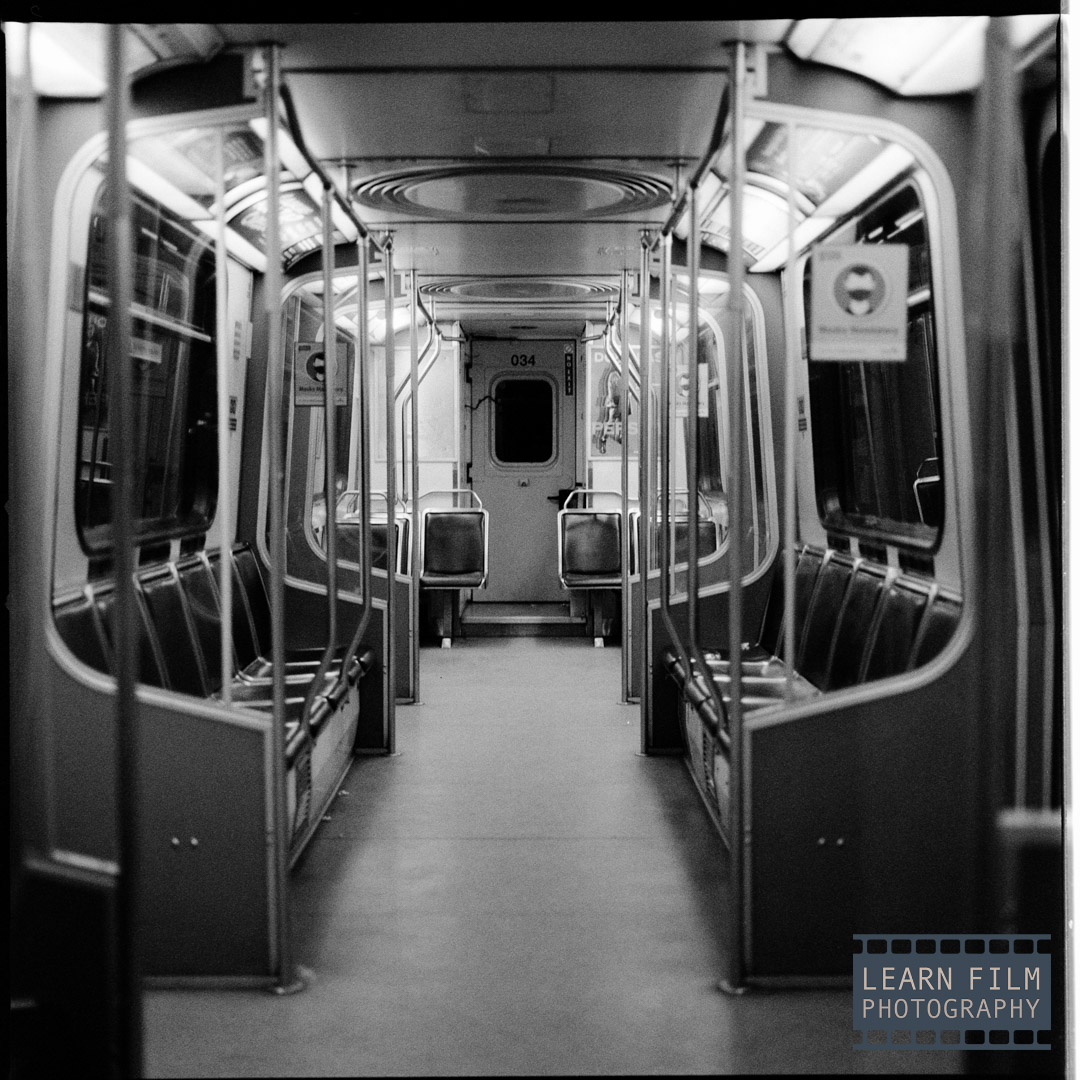
What are the best developers for Delta 3200?
One downside of T-Grain films is that they require fairly specific developers. These emulsions are more sensitive to change than traditional grains, and will ruin negatives if they’re developed in the wrong soup.
That’s why Ilford recommends using DD-X to produce the best overall image quality and sharpness when developing Delta 3200. If you’re okay with using powdered developers, Microphen is a cheaper alternative that can get astoundingly similar results to DD-X. However, Microphen cannot push this film as far as DD-X.
Xtol is another perfect developer for Delta 3200. It produces wonderfully sharp negatives without too much grain or contrast. But if you’re into big grains, nothing will get you the same results as Rodinal when shooting this film at box speed. When pushing this film, Rodinal can make the grains become so coarse they ruin fine detail across the film.
Black, White, and Green by Flic Film also works incredibly well with Delta 3200. This is a phenidone/Vitamin C-based developer that works at low speeds to bring out the maximum shadow detail in film. BW&G comes in a long-lasting liquid format like the old HC-110 formula, and has very quickly become my favorite film developer for the excellent results it creates. Right now Flic Film chemistry is only available in Canada and the US, but when this developer reaches other markets overseas, it’ll be well worth it.
See the differences between film developers in this side-by-side comparison.
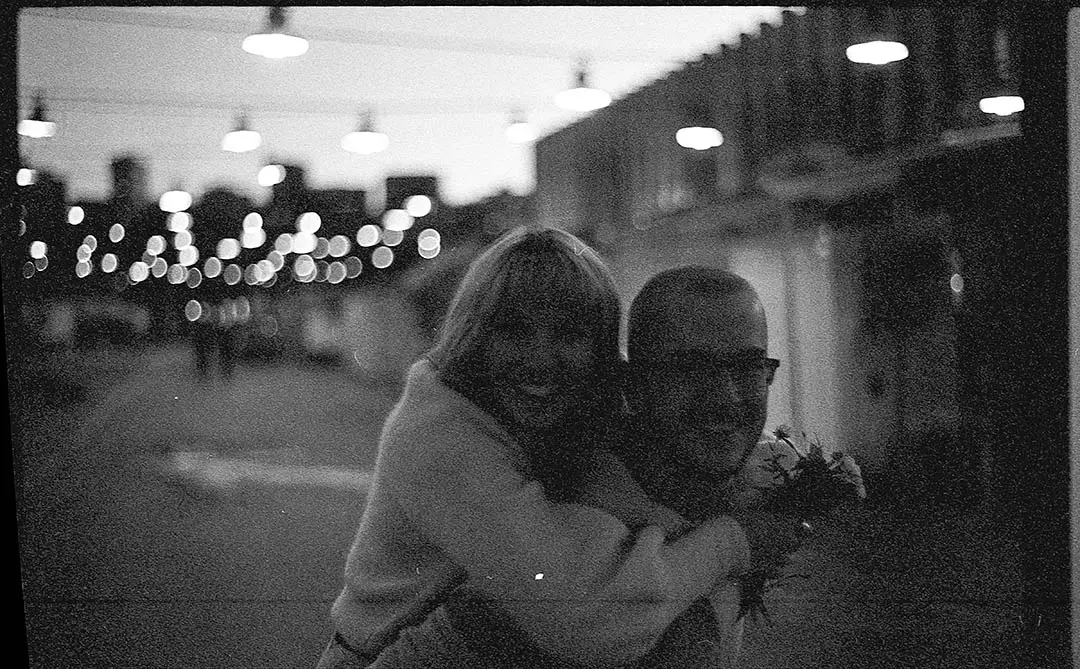
Delta 3200 does not match with fine grain developers
I would not recommend using this film with ultra-fine grain developers like diafine, perceptol or even D-76, as these film developers eat away much of the grains and significantly reduce film speed. If you want fine grain, choose a slower speed film like Delta 400 — trying to get fine-grain results with a high speed film will only result in losing sharp details.
I’ve also run into horrible, muddy shadows when developing Delta 3200 with HC-110. In fact, the first time I shot this film and developed it in HC-110, the results were so bad I almost swore it off for good. Luckily I had another roll on the shelf and decided to give it a second chance after doing some research.
Since trying it with DD-X, I’ve always been sure to keep that developer stocked and ready on the shelf. It’s just too good to ignore the results that can be had with the right film and developer combination.
An Important Note for developing Delta 3200: Ilford’s technical data sheet recommends using a longer than normal fixing time for archivability. It’s always better to add a minute or two to the fixing step just to be safe with a film like this. It contains much more silver than 400-speed films, which makes it take longer to completely develop and fix.
As well, here’s a guide to the best sharpness-enhancing developers on the market for both T-grain and regular grain films.
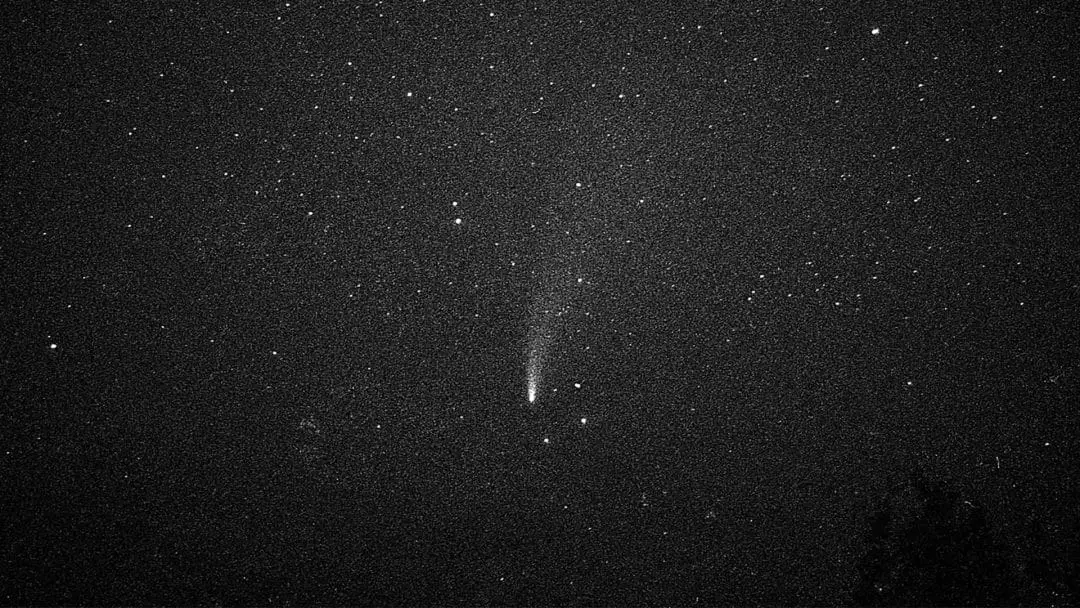
What’s the best way to push Ilford Delta 3200 to ISO 6400, or 12,800?
ISO 25,000 is only three stops away from Delta 3200’s box speed, meaning it’s completely possible to get there, and in theory, even further. Pushing any film 3 stops will have consequences, including reduced sharpness, larger grain, loss of shadow details, and higher-contrast contrast.
Delta 3200 is a T-Grain film, meaning it will have reduced tonality compared with conventional grain films. So while pushing isn’t out of the question, pushing will result in less tonality when compared to traditional-grained film emulsions like HP5+.
When pushing more than one or two stops, I’d usually recommend using a stand development. But again, T-Grain films are more sensitive to changes in developing time than traditional grains. So it’s better to use a standard development procedure, where you’re completing four gentle inversions every minute. Learn more about how agitation affects film development here.
The best developer for pushing Delta 3200 is in DD-X, which is the all around best film developer for Delta 3200. Microphen is a powdered film developer that gives a noticeable speed boost to film. So when pushing Delta 3200, you will have brighter shadows and lower contrast using Microphen than you will even with DD-X.
When pushing Delta 3200, I always over-develop the film by 1 stop. If you’re shooting at ISO 12,800, use the development times for 25,000. Developing for longer will give the film developer extra time to bring out all of the latent details in the shadows.
How far can I pull Delta 3200?
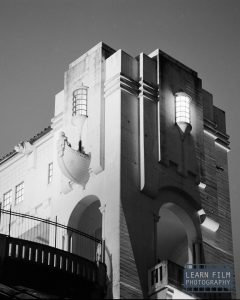
Despite being called a ISO 3200 film, Delta 3200 is actually rated at ISO 1,000. That means is possible to shoot Delta 3200 at ISO 800 or even 400 and capture remarkable shadow detail, while making images that appear to have come straight out of a romantic movie from the 1960s.
Like all B&W films, Delta 3200 can only be pulled by a maximum of 2 stops. Pulling B&W more than 2 stops may result in flat, overly dense images that your scanner or DSLR will have trouble with.
Printing with dense negatives may be a dream, giving you tons of time to dodge and burn to your heart’s content. But scanning a dense negative like this will create noisey images that are difficult to work with as scanners have to increase their ISO to capture the image.
When you’re ready to pull this film, again the best overall developer is DD-X. This versatile solution will produce beautiful, clean results every time. If Delta 3200 is something you often keep on hand, then having a bottle of DD-X will ensure you can get the best results every time.
Of all the developer combinations I’ve tried, this is by far my favorite for the clean, beautiful results. Rodinal will also work great for pulling when you’re looking for a large grain structure.
Final thoughts
If you haven’t tried Ilford Delta 3200, you definitely need to. There’s no film that creates that ultra-grainy, classic look quite like this film. And the extended ISO range makes it usable in almost any scenario outside of bright daylight. Even though, simply increase the aperture to f/16 and shoot like normal.
Delta 3200 is by far my favorite film, and it’s one that I use often at paid photoshoots, and even when just walking around exploring the city. Combined with DD-X, or Black, White, & Green developer, you can’t go wrong.
What’s your favorite way to shoot Ilford Delta 3200? Let me know in the comments below, or send me a DM on Instagram! Use the hashtag #LearnFilm for a chance for your photos to be featured on the official Learn Film Photography Instagram account.

By Daren
Daren is a journalist and wedding photographer based in Vancouver, B.C. He’s been taking personal and professional photos on film since 2017 and began developing and printing his own photos after wanting more control than what local labs could offer. Discover his newest publications at Soft Grain Books, or check out the print shop.

